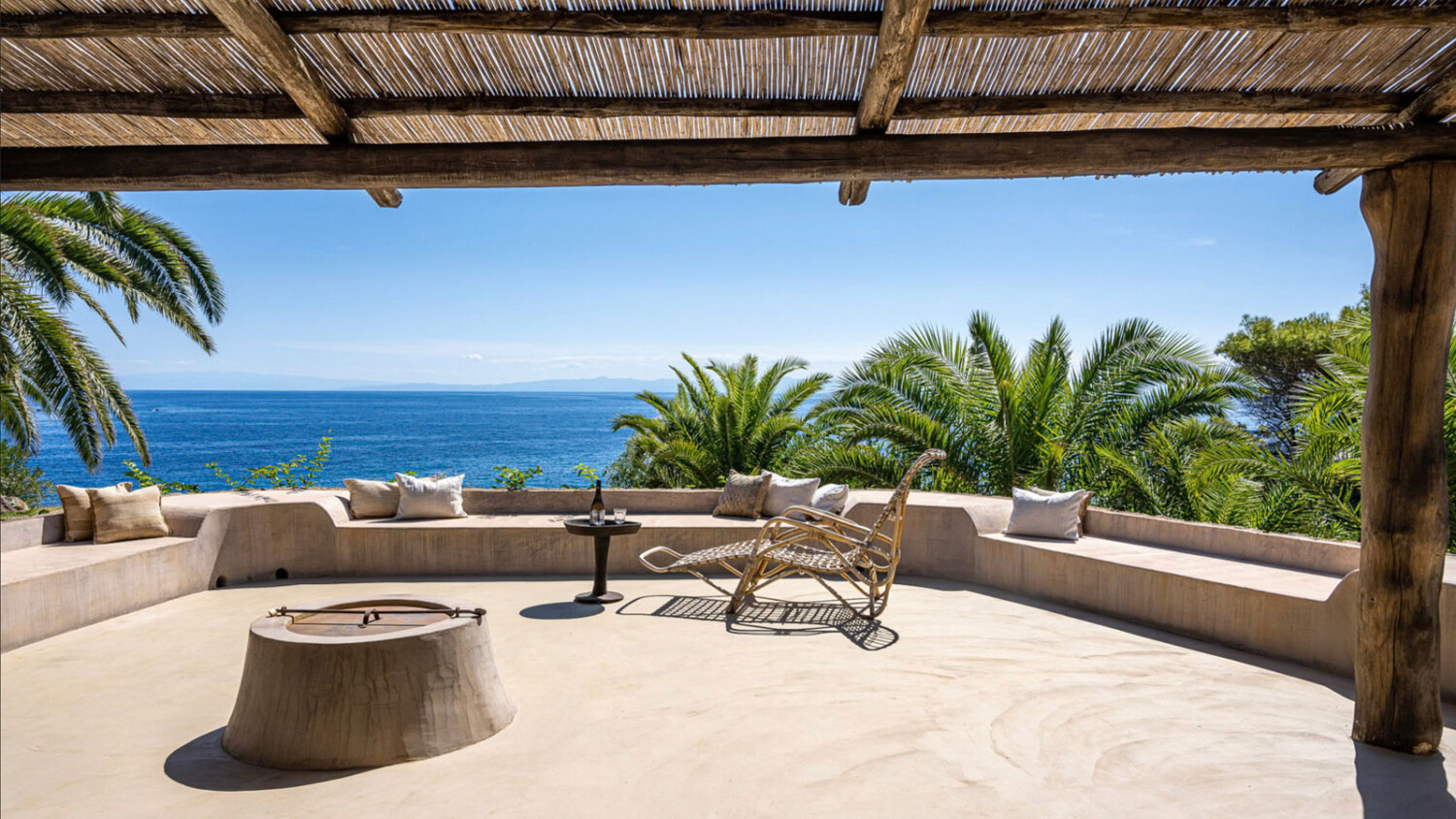Adam Butler Photographs a 1970s Sicilian Villa on Panarea
Mentally, I am here: in Adam Butler’s photographs of a 1970s Sicilian villa on Panarea.
Adam’s photographs of this gorgeous home and retreat feel equal parts architectural, landscape, food, and hospitality photography. This shoot is a masterclass of blending all of these genres to showcase the complete story of a place – all with an unstuffy or overprocessed air.
Adam has a lot of intel and history to share about Antika (this villa), so without further ado:
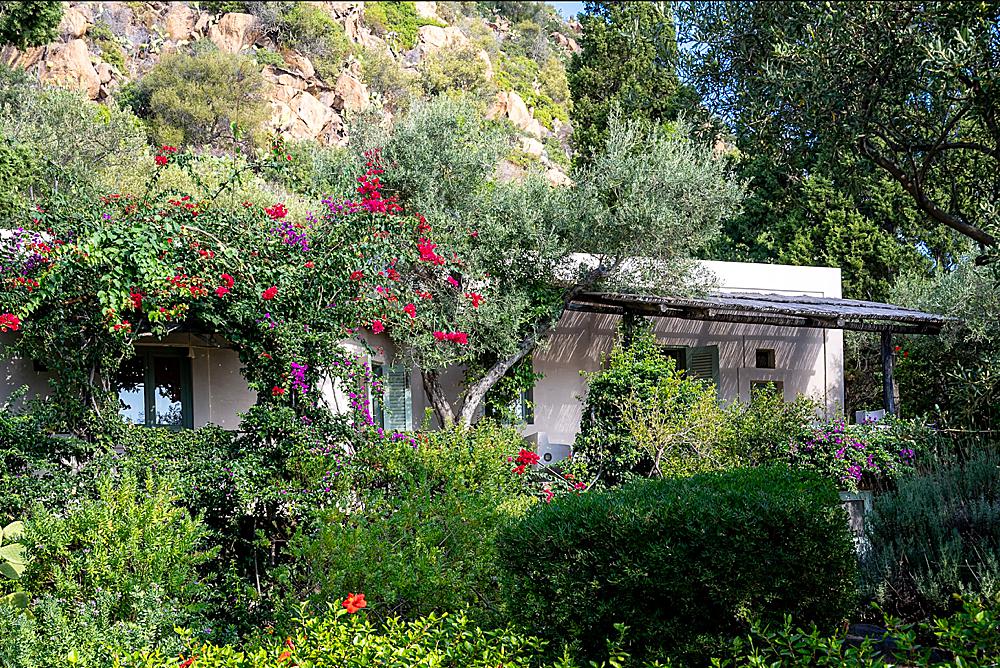
Adam starts, “The tiny island of Panarea is one of the most beautiful of the many Italian islands, and the jewel of the Aeolian Islands, located just off the north eastern tip of Sicily. We have a family house there, so I have been visiting for all of my life… and of course photographing it extensively over the past 35 years.
It is an island with no roads for cars, only for golf carts and mopeds, and most people walk barefoot, and it is barely a mile and a half square, with only a small crescent of it inhabited along the eastern side.
There are no street lights, and the population is barely 150, although this swells considerably in the summer when it has become one of the most fashionable places to be anywhere in Italy. It’s easy to spot international film stars, musicians, celebrities, etc who come here to get away from it all and to enjoy the unadulterated nature, clean air, dark night skies, and the wonderful sea.”
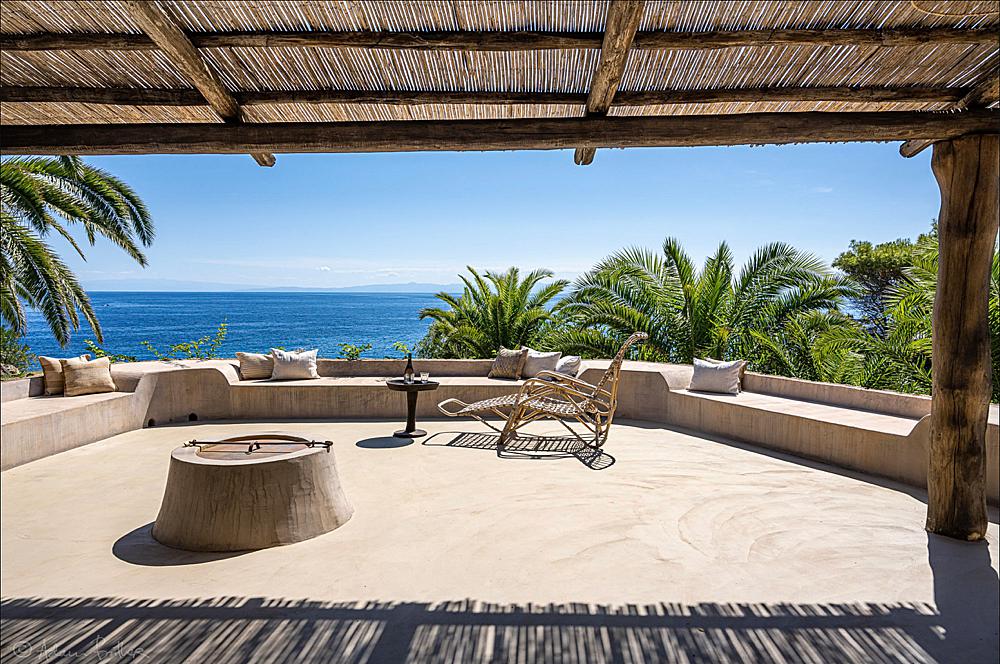
“I love capturing the blinding light, creating such strong contrasts with the dazzling whitewashed houses, and the saturated colours of the rich vegetation everywhere; flowering fruit and cactus plants, bougainvilleas, and Mediterranean flowers,” he goes on.
“Photographing houses in these conditions can be very problematic because of the extreme contrasts. The simple houses are built with small windows to keep out the summer heat, but this means that the interiors are much darker than the exteriors with the blazing Sicilian sun. As it’s important to show at least some of the outside world when shooting the interiors, this means a lot of bracketing and then post production work – either via HDR editing and blending together several images with different exposures (although I find this doesn’t work so well in these lighting conditions), or blending together different exposures in photoshop, or sometimes capturing that perfect exposure which can work alone.”
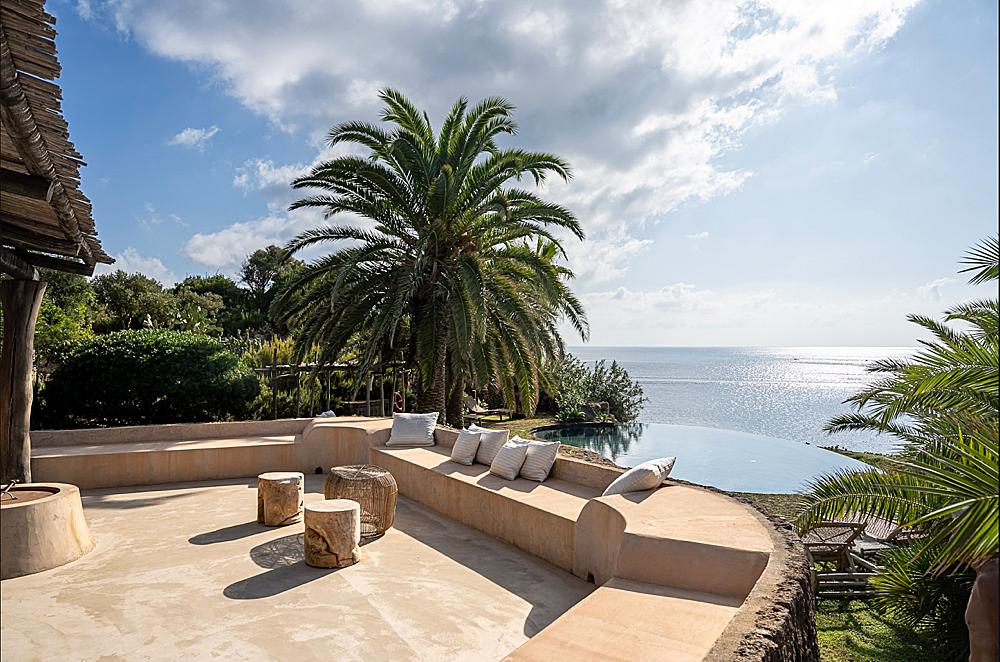

Adam tells, “This house called Antika was designed and built by Paolo Tilche, a visionary architect who came to the island of Panarea in the early 1960s and quickly realised its potential. He began to build a few houses for the professional people of central and northern Italy who were amongst the first tourists of the island.
Tilche’s style followed the traditional simple cuboid shapes of Aeolian buildings, but Tilche brought in the surrounding nature, often leaving massive boulders as part of the structure, and building around or incorporating ancient olive or eucalyptus trees, and always making sure that the rooms, windows, doors lined up with the unique views of Panarea – not only does this island have its own archipelago of rocky islets surrounding it, but it also enjoys unparalleled views of its neighbour Stromboli, a volcanic island which has been erupting continually since ancient times, and which offers a nightly spectacle of red plumes of lava thrown high into the sky.”
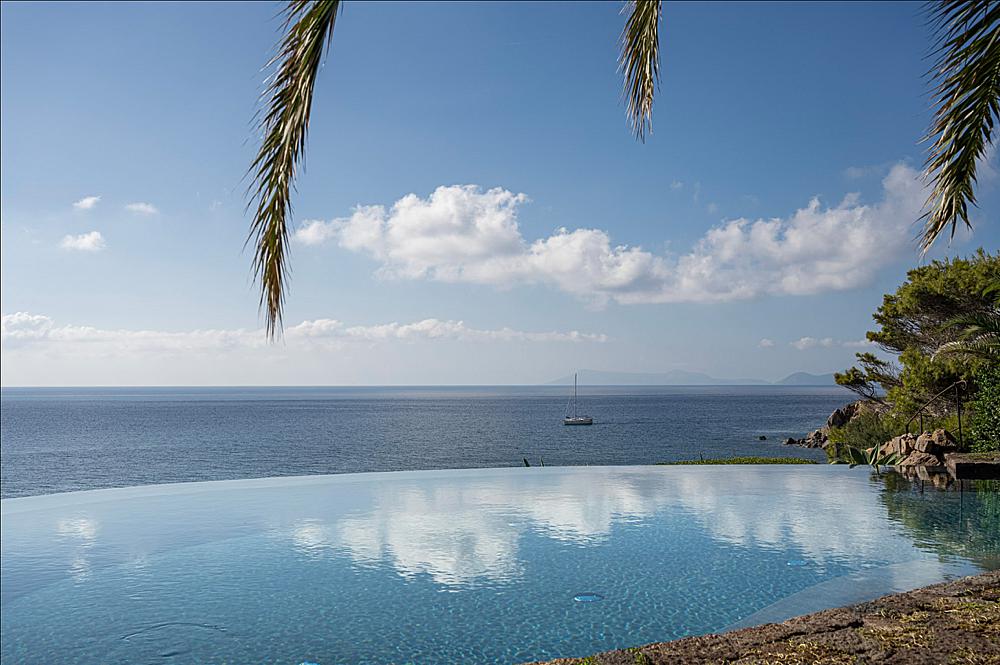
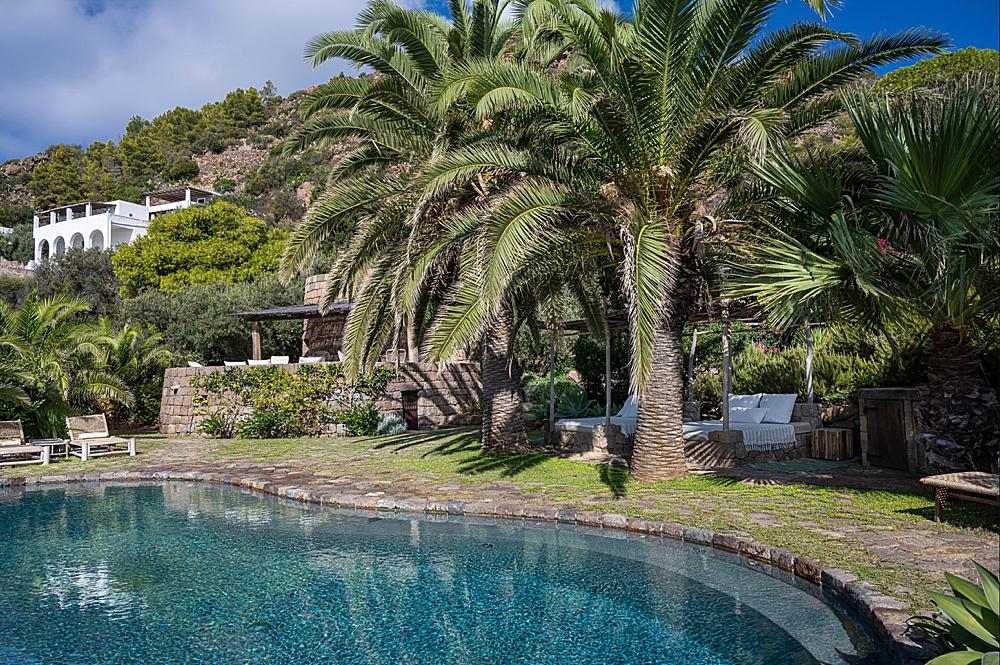
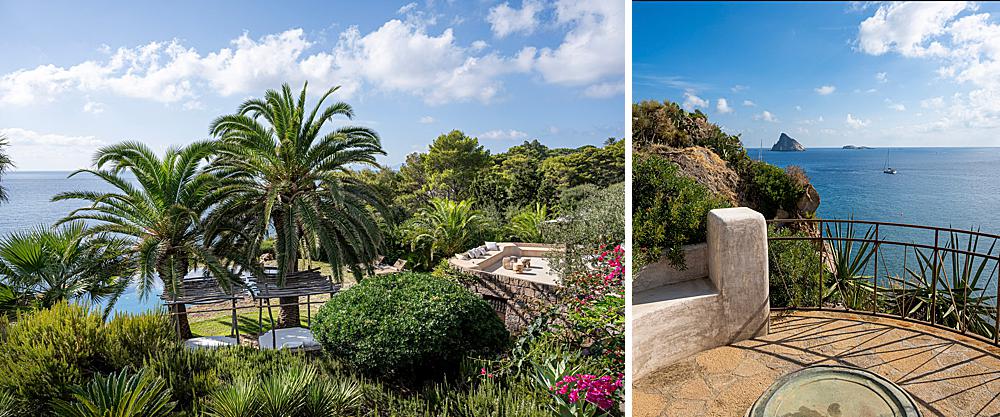
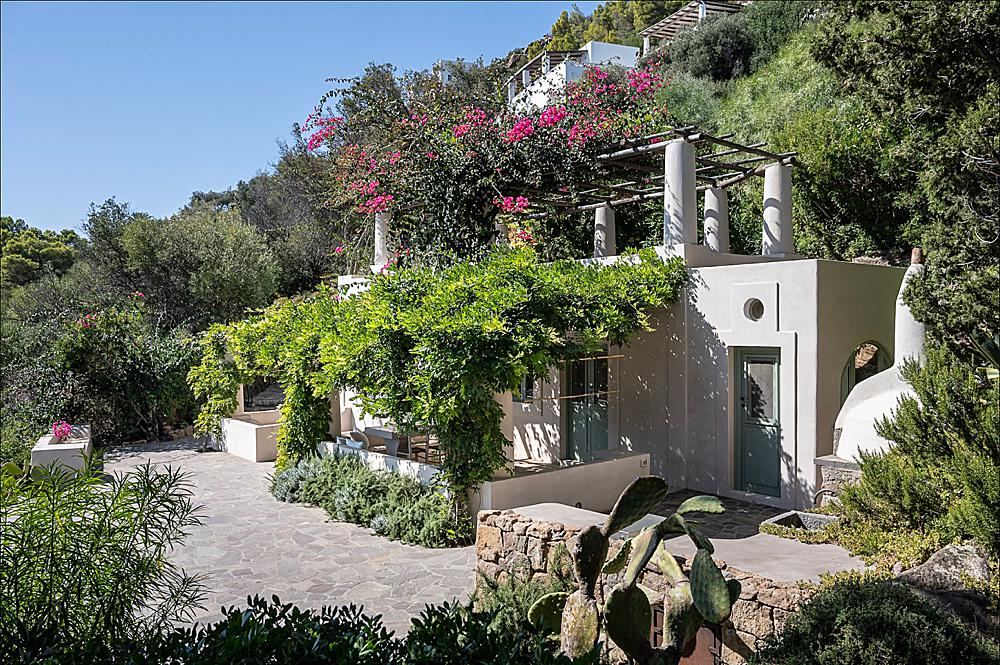

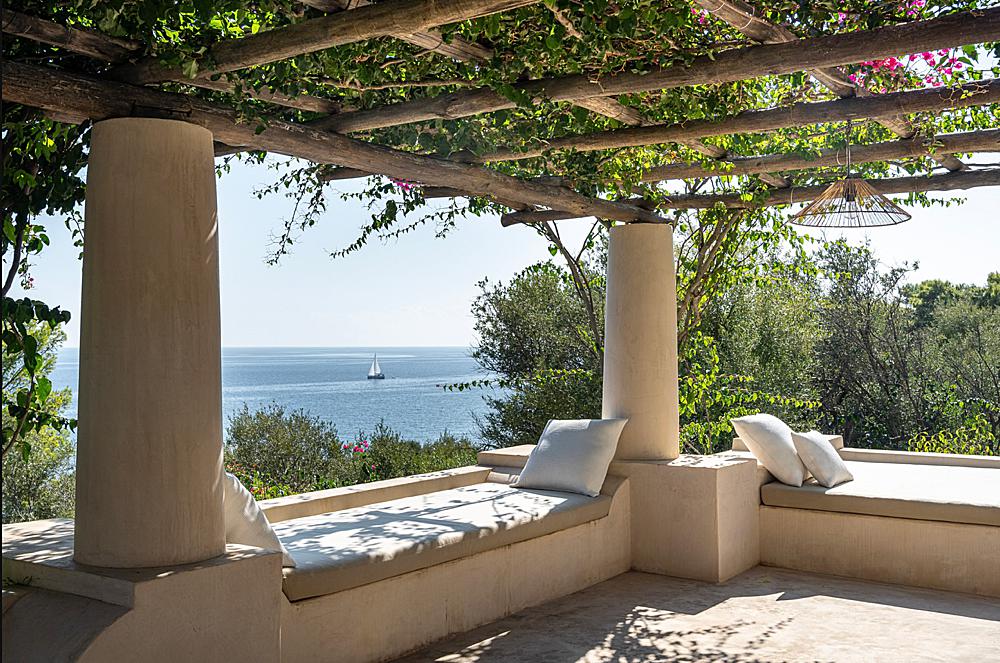
“This house Tilche built in the early 1970s. It consists of 3 separate buildings laid out on a large plot of land along the coast amidst a rich panoply of ancient olive trees, conifers, fig, and lemon trees, and many cactuses. After 40 years of belonging to an elderly Milanese couple, the house fell into disrepair and abandonment for a number of years after they died,” he says.
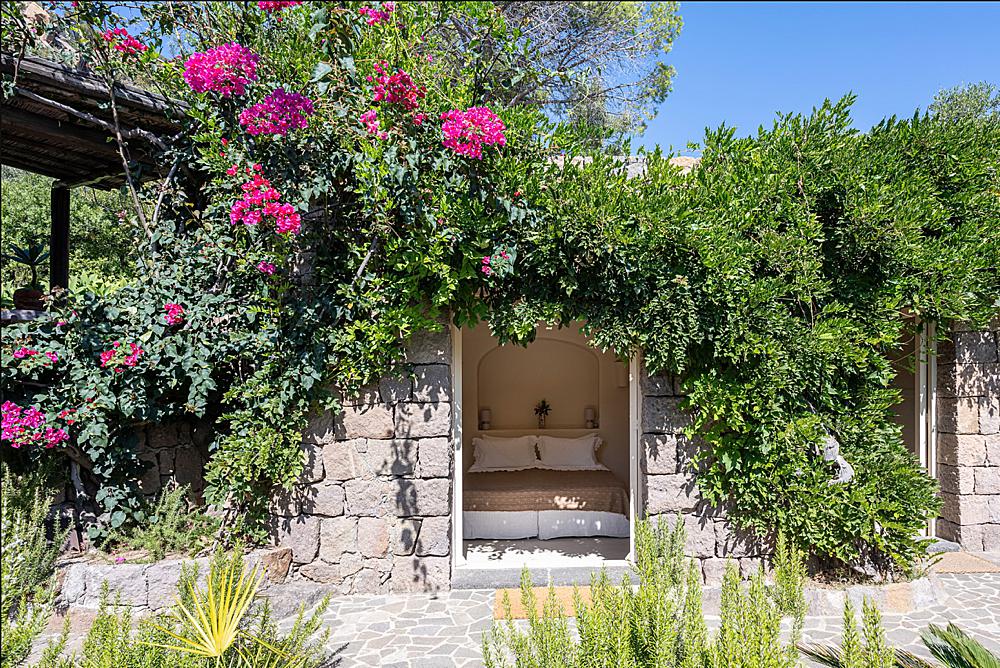
“We also took a number of ‘mis-en-scène’ shots, ie. set up shots of food etc laid out on the table as they wanted shots to show how the villa his used, for hosting dinners and for inviting friends and family to stay.”


Adam divulges a bit about the challenges of this shoot, saying “Of course it’s lovely to shoot in the Mediterranean light, but the interiors proved a lot more problematic as typically the windows in Aeolian buildings are very small, to help keep the searing Sicilian heat out. This also meant the contrast between the rather dim interiors and the blinding light of the outdoors was very difficult to control. I thought it was however important to show what was outside, so I used a combination of multiple exposures and post-production in Photoshop.”
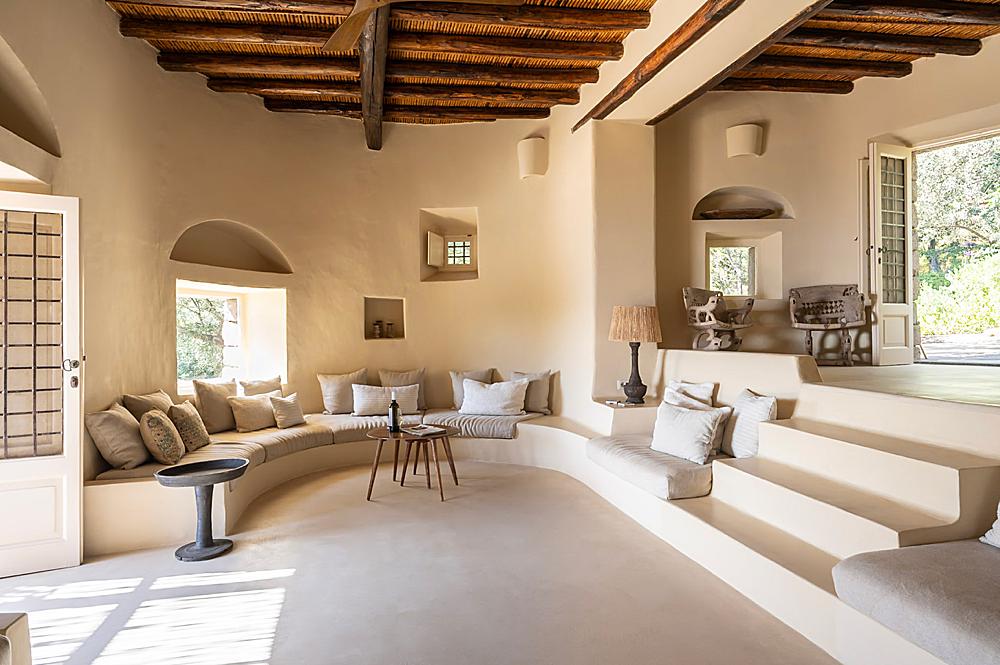

He breaks down the making of one of the trickiest but most beautiful photographs in this project – “One of the images which took a significant amount of time to edit was [the photograph below]. This was a view of the main lounge area of the house. As can be seen, the windows are tiny, so as to not allow much heat in during the sweltering summer months, but this means very little light gets in too. (Electricity was only brought to this island in the 1980s so many houses still do not have air conditioning, and the traditional architectural style and building techniques are still used today)
The view of the terrace outside and the sea beyond was important to include in this image, so I took several different exposures on a tripod. It was impossible to make this image work by editing a single blended HDR image made from these exposures, a technique I often use as an interiors photographer in London. The extremes were too harsh to make the transition areas look real. A single image with sufficient detail in the brightest areas meant that that the interiors was about 4-5 stops underexposed, so almost entirely black.
The only option was to blend together in Photoshop 3 different exposures – the interior, the exterior, and the transition areas of the door and stone wall just outside. These I blended together but made sure that the extreme light was still evident – the exterior I left still a little blown out – any darker exposure of the outside and the image would have looked just fake.”
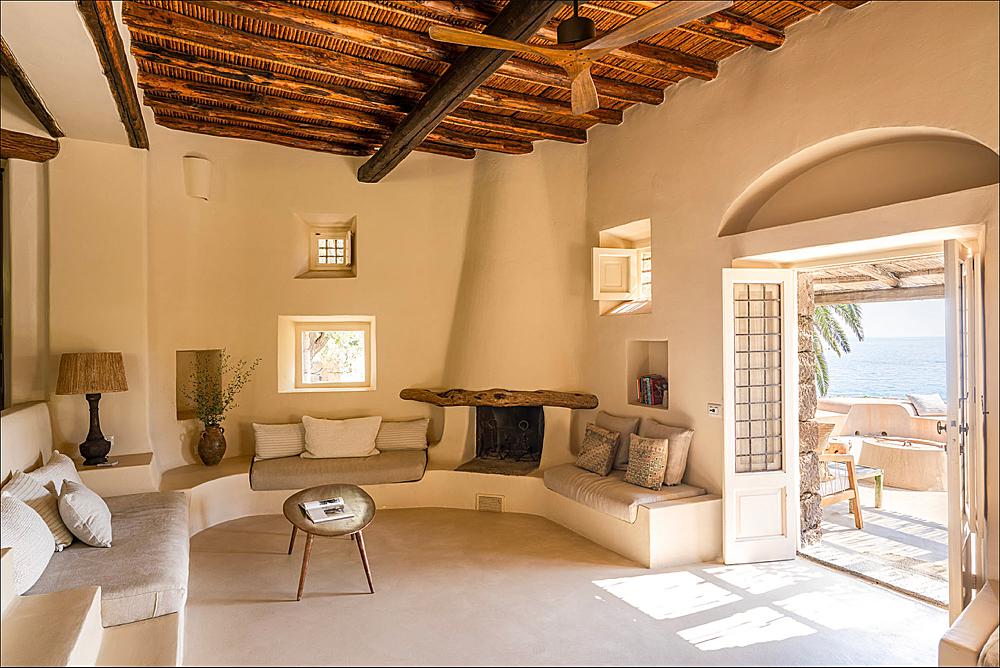
That deep contrast and penetrating light is what makes this series feel so special. The shadows and shapes it creates is lovely, and Adam did an awesome job of managing it all.

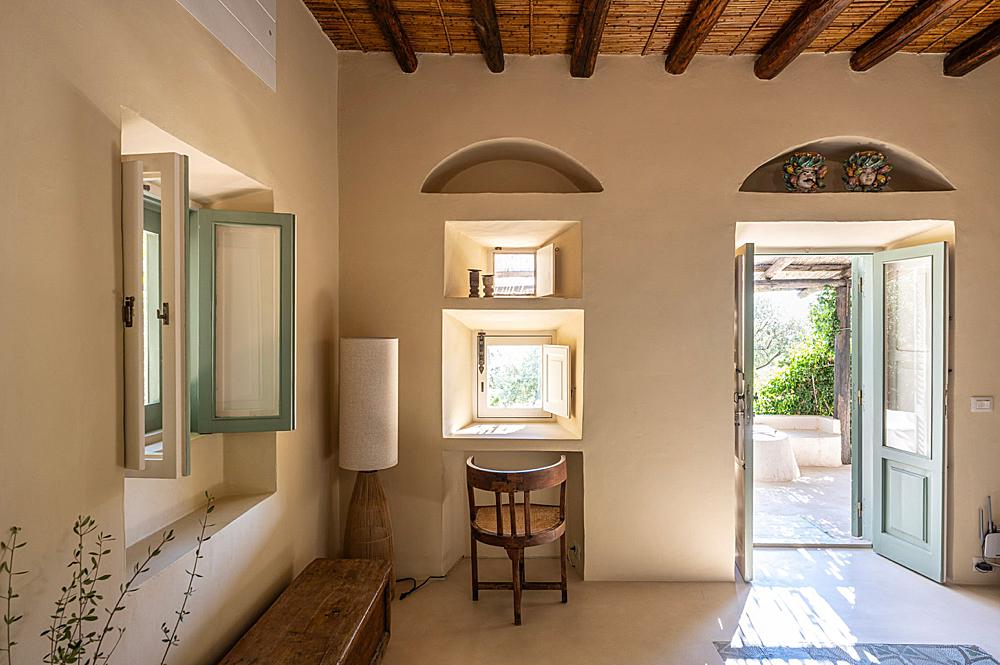
This simple vignette is my favorite from this series. The slight imperfections, the sailboat perfectly placed, the quietness of it all, I just love it!
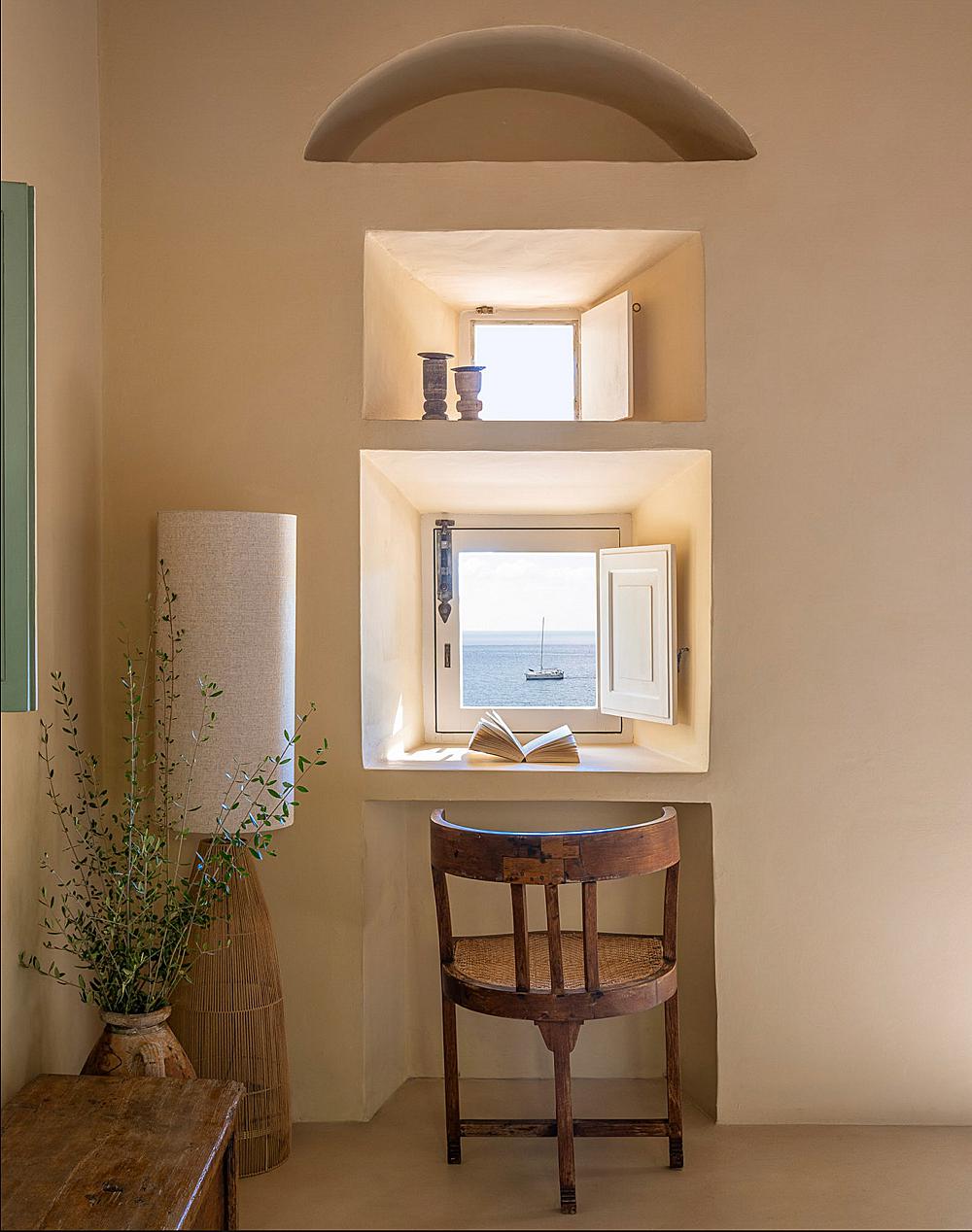
Adam shares, “The new owners, an Australian couple with ancestral links to Sicily, purchased this villa and embarked upon a complete refurbishment, yet they remained very faithful to the original designs and features, including painstakingly restoring all of the ironwork of the doors and windows, and then scouring antique shops on mainland Sicily to find old Sicilian tiles, stone basins and old bronze taps for the bathrooms, and recycled doors wherever they needed replacing. They asked me to photograph the house as they wanted to have a thorough documentation of the work that they undertook.”
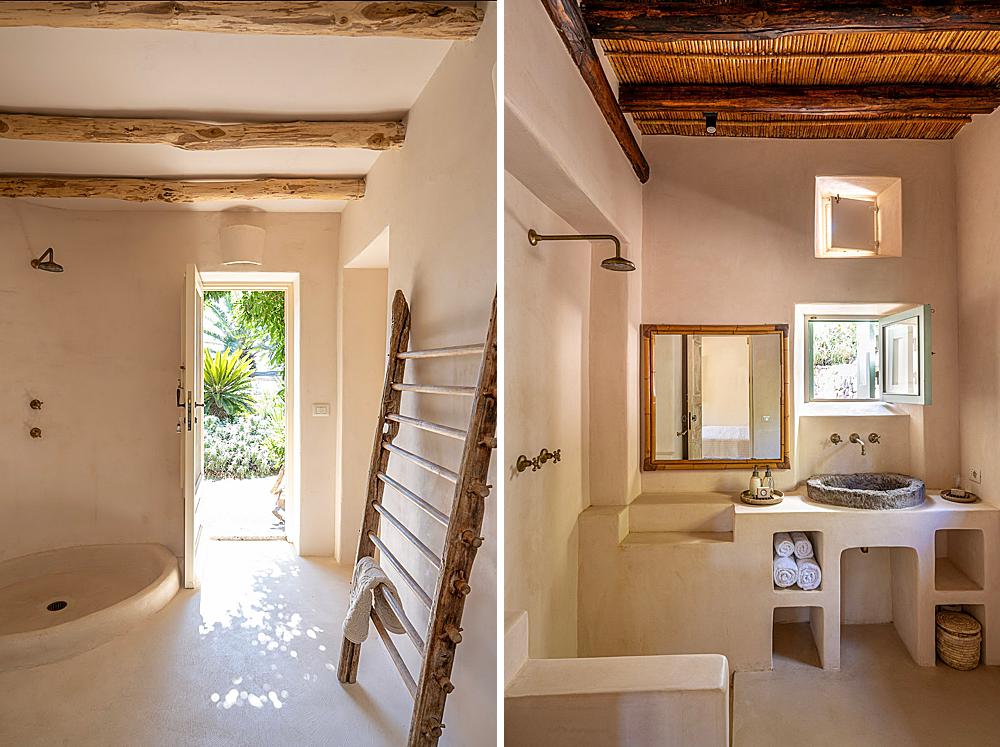

He goes on, “The main building housing the kitchen and lounge areas, with the terrace and pool in front, was clad in local stone to further seclude it into the natural surroundings, and this I tried to convey in the images. The pool itself is set atop a small cliff leading directly down to the sea, and the views from here are wonderful, towards the adjoining islands of Lipari and Vulcano. At dusk, the infinity pool setting is mesmeric.”
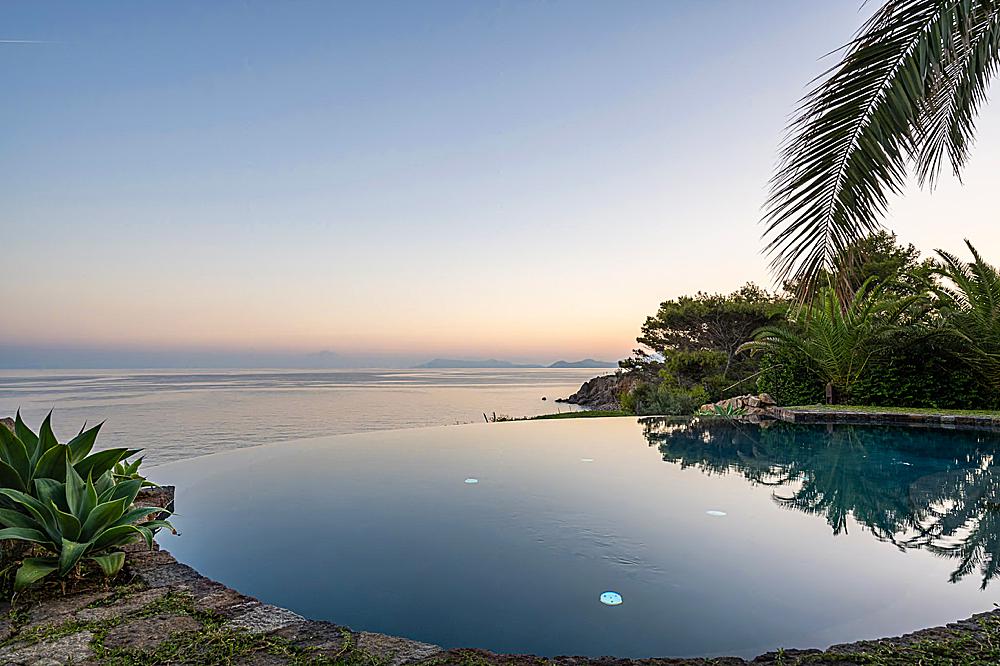
“For me, photographing this villa meant I am in my element. My family is almost entirely Italian, and spending time in Italy which I consider my homeland is always a thrill, especially in my special little corner of Panarea. I have been photographing and publishing features on the villas of this wonderful place for 25 years and I have made it into a speciality; I love working with these extremes of light, I love to show how the houses there integrate and relate to the natural landscape surrounding them, and I love to show how unspoilt and untamed this nature really is there, a place with no cars, no streetlights, and only the sea, horizon and sun to fill your senses,” Adam wraps up.
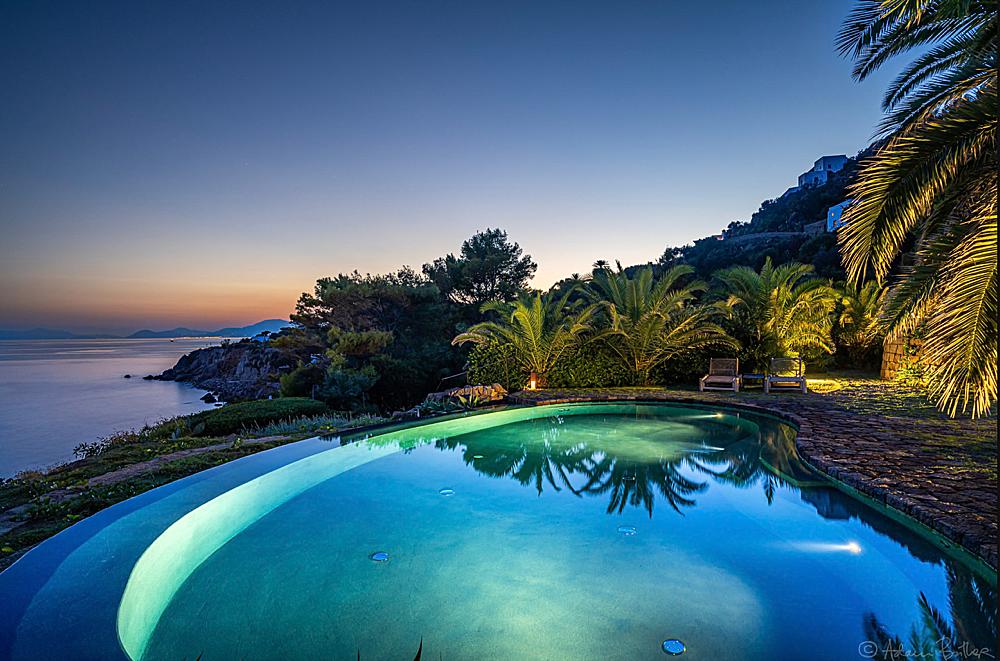
The couple spend much of the summer on Panarea, but it is occasionally rented out via @thethinkingtraveller. A massive thank you to Adam Butler for sharing this with us. See more of Adam’s work at adambutlerphotography.com and @adambutlerphotography.
If you have a project you’d like to be considered for Project of the Week, you can submit it here.
